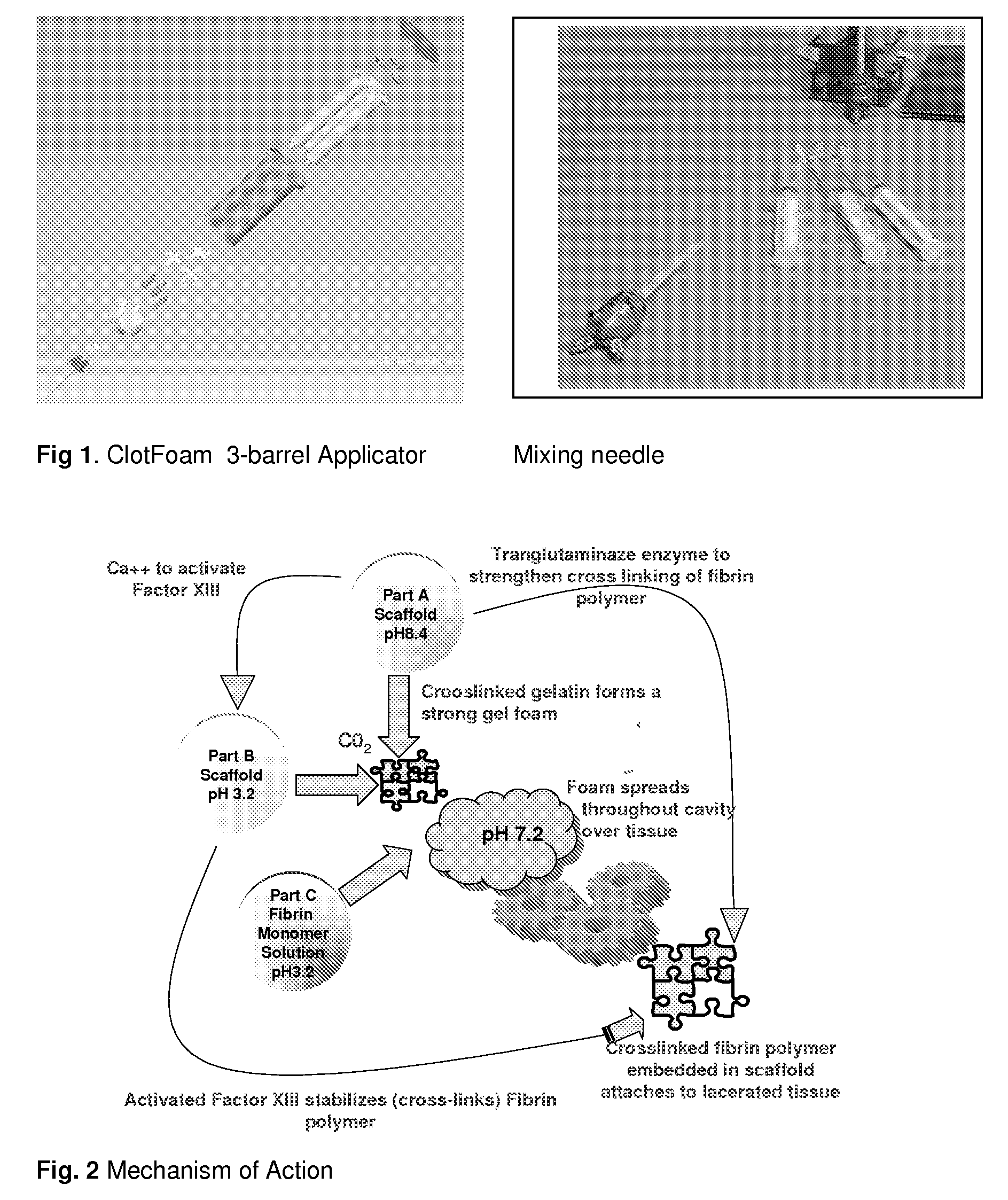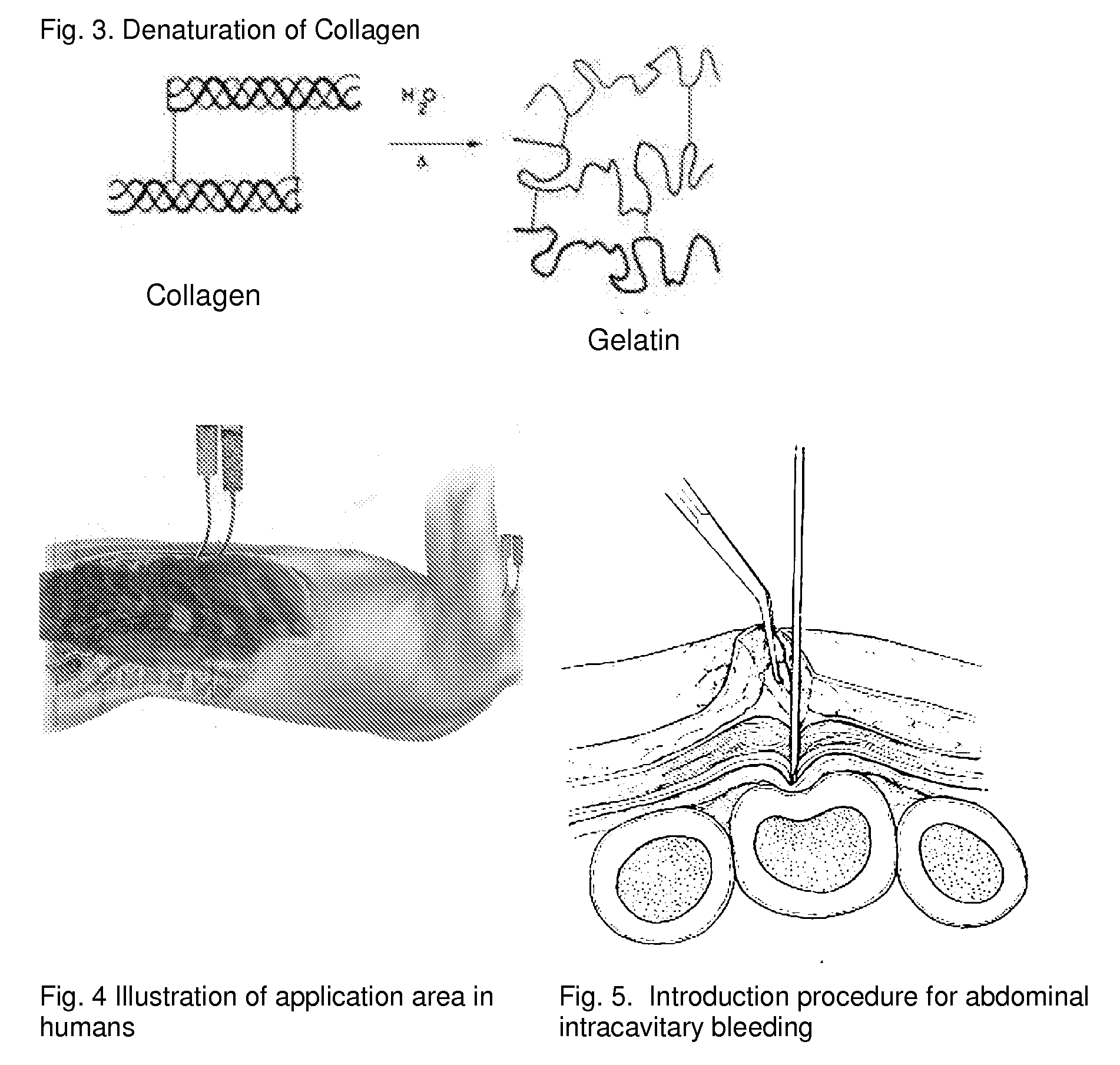Tissue sealant for use in noncompressible hemorrhage
a tissue sealant and hemorrhage technology, applied in the field of adhesive sealant composition and hemostatic agent, can solve the problems of traumatic injury being a frequent cause of morbidity and mortality worldwide, hemorrhage still remains, late death and complications, etc., and achieves excellent hemostatic agent candidate, minimal risk, and little training
- Summary
- Abstract
- Description
- Claims
- Application Information
AI Technical Summary
Benefits of technology
Problems solved by technology
Method used
Image
Examples
examples
[0120]The adhesion characteristics to vital human tissue and the kinetics of polymerization of the gel have been tested in laboratory studies showing that the CLOTFOAM sealant polymerizes faster than other sealants. Rheological measurements indicate that CLOTFOAM catalyzes the conversion of gelatin solutions into hydrogels, and gel times are on the order of 6 seconds. G′ reaches 2000 dyn / cm2 in less than 10 seconds. Studies of tensile static and dynamic loading of the adhesive hydrogels in bulk form demonstrated that the Young's modulus sometimes referred to as “Modulus of Elasticity” ranged from 175 to 240 kPa and that these bulk properties were stronger to those reported for hydrogels obtained from fibrin-based sealants. The gelatin-CLOTFOAM adhesive is expected to adhere to lacerated tissue and bind the opposing tissues together with a strength that is significantly higher than that observed for fibrin sealants. The following laboratory tests were conducted interactively with ani...
PUM
| Property | Measurement | Unit |
|---|---|---|
| Fraction | aaaaa | aaaaa |
| Pressure | aaaaa | aaaaa |
| Concentration | aaaaa | aaaaa |
Abstract
Description
Claims
Application Information
 Login to View More
Login to View More - R&D
- Intellectual Property
- Life Sciences
- Materials
- Tech Scout
- Unparalleled Data Quality
- Higher Quality Content
- 60% Fewer Hallucinations
Browse by: Latest US Patents, China's latest patents, Technical Efficacy Thesaurus, Application Domain, Technology Topic, Popular Technical Reports.
© 2025 PatSnap. All rights reserved.Legal|Privacy policy|Modern Slavery Act Transparency Statement|Sitemap|About US| Contact US: help@patsnap.com



